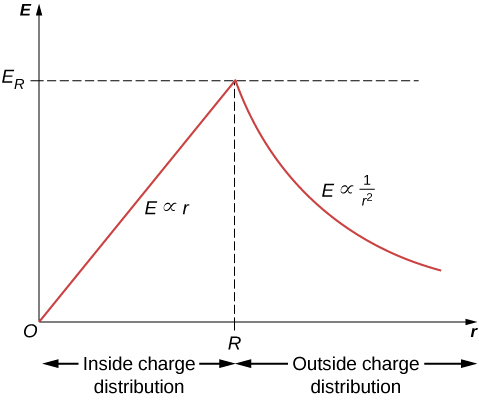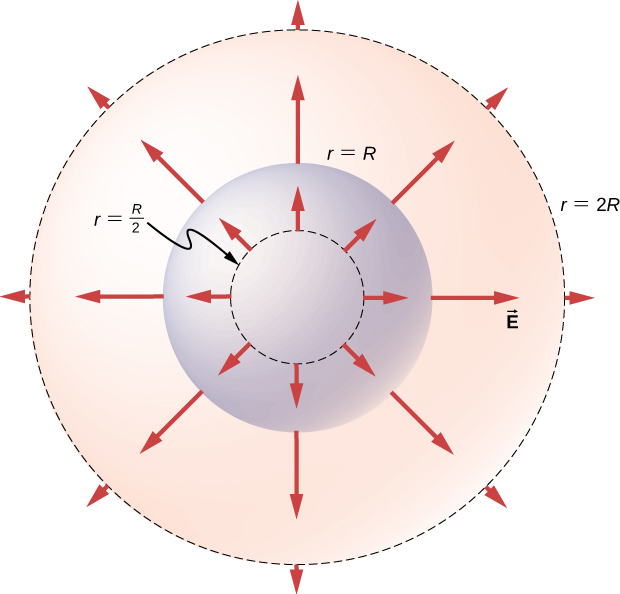| << Chapter < Page | Chapter >> Page > |
Note that the electric field outside a spherically symmetrical charge distribution is identical to that of a point charge at the center that has a charge equal to the total charge of the spherical charge distribution. This is remarkable since the charges are not located at the center only. We now work out specific examples of spherical charge distributions, starting with the case of a uniformly charged sphere.
The answer for electric field amplitude can then be written down immediately for a point outside the sphere, labeled and a point inside the sphere, labeled
It is interesting to note that the magnitude of the electric field increases inside the material as you go out, since the amount of charge enclosed by the Gaussian surface increases with the volume. Specifically, the charge enclosed grows , whereas the field from each infinitesimal element of charge drops off with the net result that the electric field within the distribution increases in strength linearly with the radius. The magnitude of the electric field outside the sphere decreases as you go away from the charges, because the included charge remains the same but the distance increases. [link] displays the variation of the magnitude of the electric field with distance from the center of a uniformly charged sphere.

The direction of the electric field at any point P is radially outward from the origin if is positive, and inward (i.e., toward the center) if is negative. The electric field at some representative space points are displayed in [link] whose radial coordinates r are , , and .

where a is a constant. We require so that the charge density is not undefined at . Find the electric field at a point outside the sphere and at a point inside the sphere.

Notification Switch
Would you like to follow the 'University physics volume 2' conversation and receive update notifications?